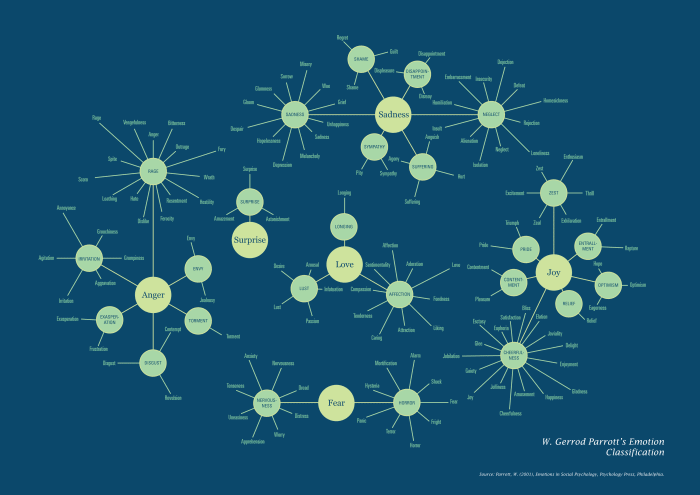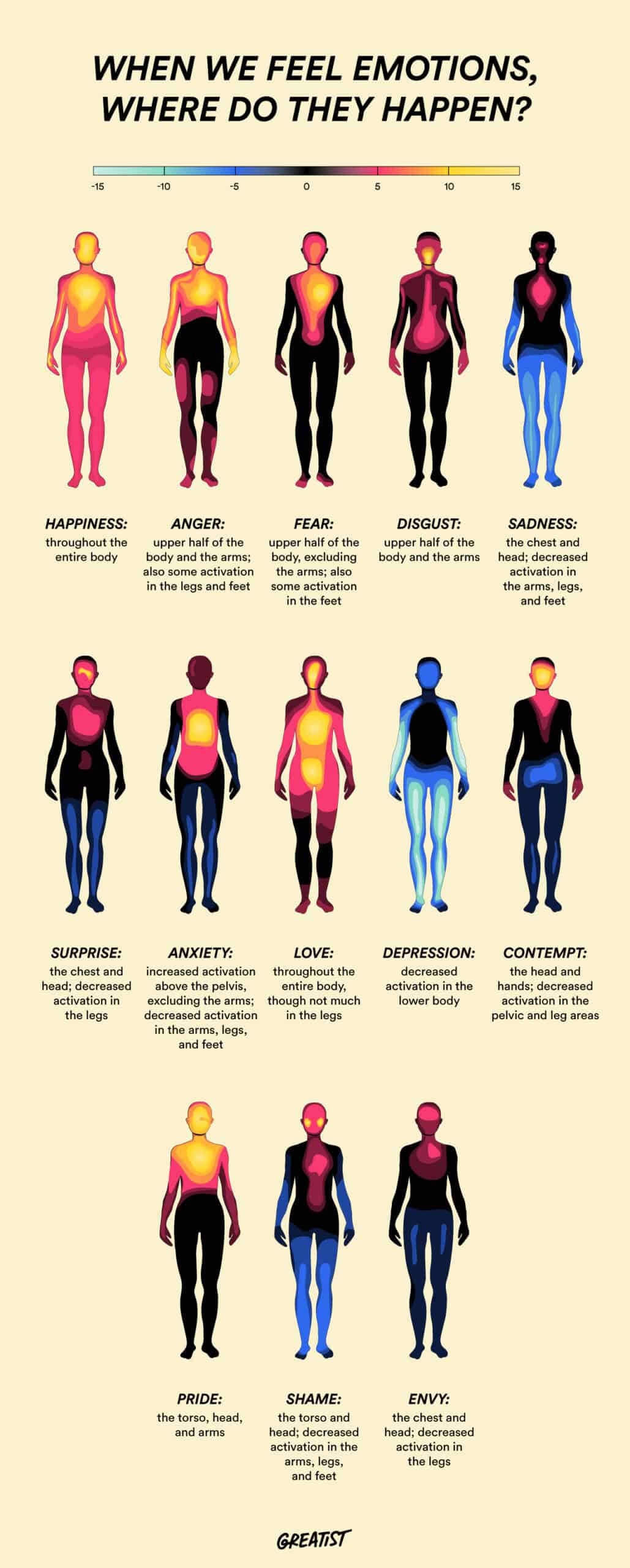
Do you ever want to express how you feel, but simple words like “sad” or “angry” just aren’t hitting the mark? Yes, you might be angry, but it’s more complex than that; you’re irritated, not furious, not envious, not tormented, and not exasperated.The breakdown of anger comes from Parrot’s Classification of Emotion, which takes the primary, comprehensive emotions we feel and characterizes them into specific, secondary and tertiary emotions.
As someone who often finds it difficult to properly articulate how I am feeling, this infographic was extremely interesting and helpful to pinpoint exact emotions. It explores the general emotions that we feel on the surface and delves deeper to describe how we truly feel.
For example, disappointment sadness is on a different level from sympathy sadness. When someone is disappointed, they are displeased because their hopes were not fulfilled. When someone is sympathetic, they are feeling sorry for someone else, which makes them upset. The reasons for and degrees of sadness vary; they are very two different emotions, yet both can still be described extensively as sad.
Humans are complex and therefore the emotions we feel are as well. Beyond the emotions that can be described in English, a number of emotions in different languages are virtually untranslatable. It’s not easy to always put feelings into words, but thankfully, someone has.





